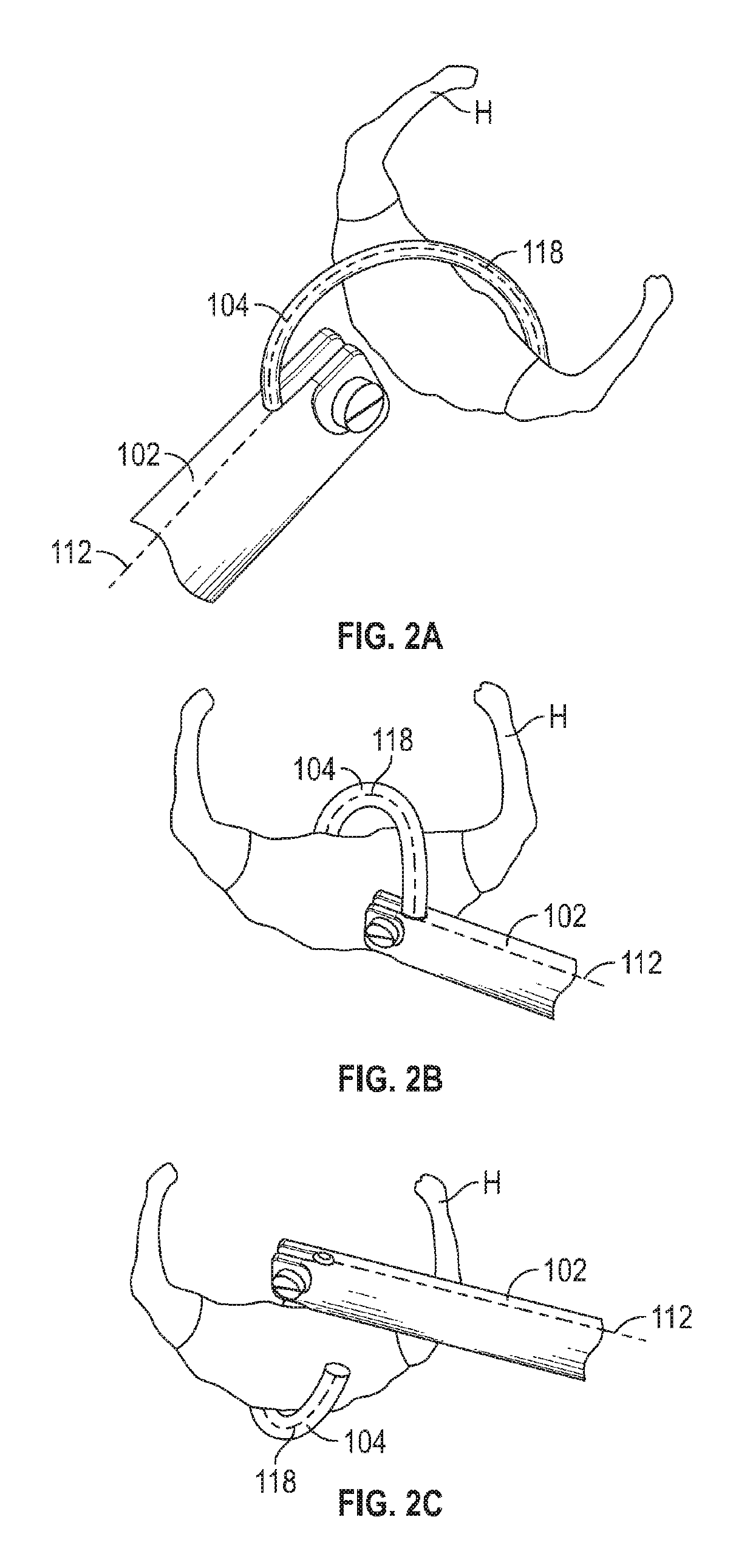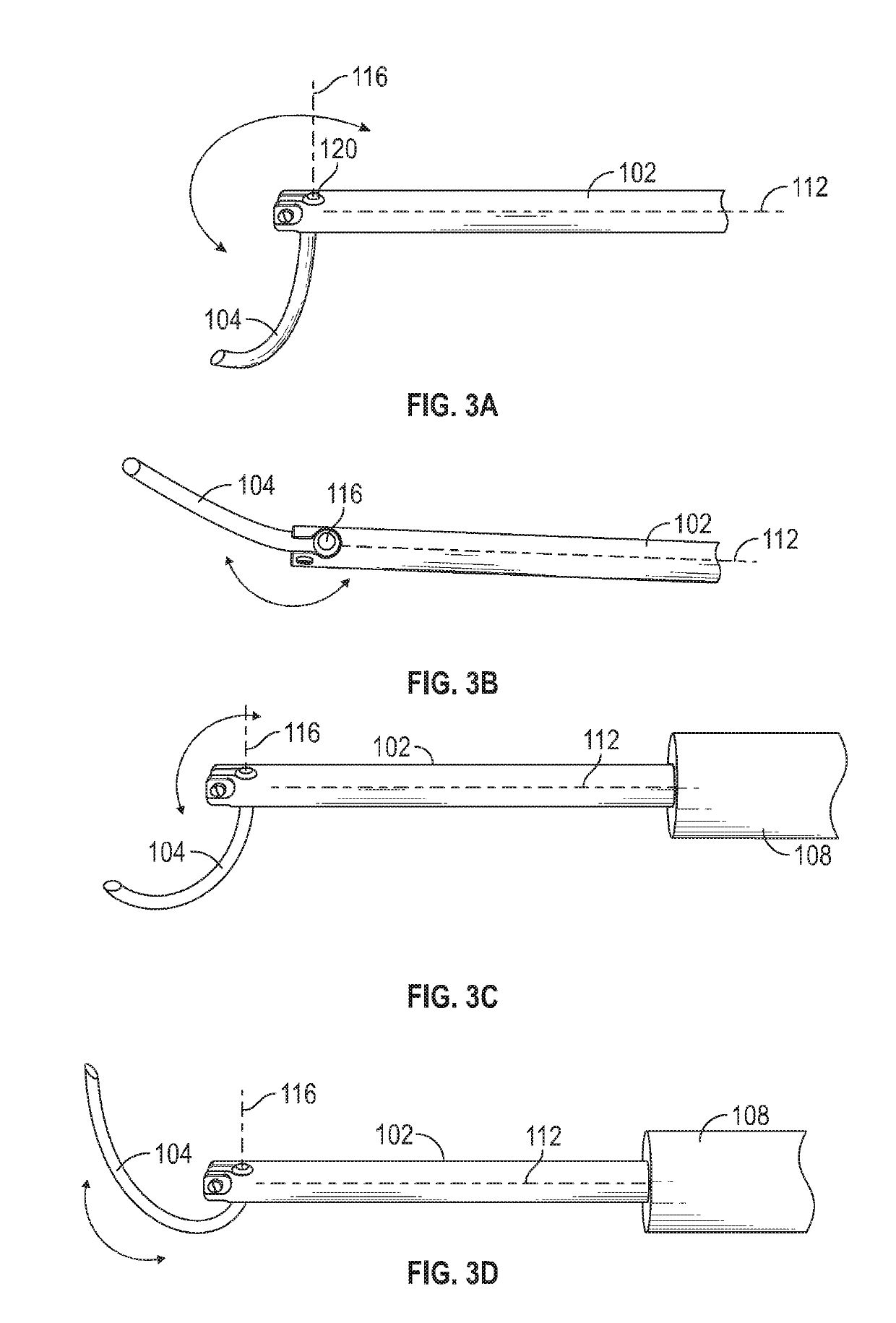Suture passer systems and methods for tongue or other tissue suspension and compression
a technology of suture passage and tissue, which is applied in the direction of surgical staples, prostheses, mechanical equipment, etc., can solve the problems of increased inspiratory effort, excessive daytime sleepiness, and risk of airway obstruction during sleep, so as to maintain the flexibility of the suture
- Summary
- Abstract
- Description
- Claims
- Application Information
AI Technical Summary
Benefits of technology
Problems solved by technology
Method used
Image
Examples
Embodiment Construction
[0084]In some embodiment, disclosed is a suture passer system and method for passing a suture (e.g., a suspension line, a tether, a tether loop, a suture, a suture loop, suture tape, an implant, etc.) through tissue to suspend or compress the tissue. The term “suture” as used herein, unless otherwise specified or limited, is intended to have its ordinary meaning and is also intended to include all structures, including any of the aforementioned or later-described examples, that can be passed through tissue using the devices described herein.
[0085]As illustrated in FIG. 1A, the suture passer 100 can include a first elongate tubular body or shaft 102. The shaft 102 can releasably couple to a suture passing element 104. The suture passing element 104 can be a flexible needle. The suture passing element 104 can pass one, two, or more sutures therethrough. Portions of the one or more sutures can reside outside of the first shaft 102. The distal end of the suture passing element 104 can b...
PUM
 Login to View More
Login to View More Abstract
Description
Claims
Application Information
 Login to View More
Login to View More - R&D
- Intellectual Property
- Life Sciences
- Materials
- Tech Scout
- Unparalleled Data Quality
- Higher Quality Content
- 60% Fewer Hallucinations
Browse by: Latest US Patents, China's latest patents, Technical Efficacy Thesaurus, Application Domain, Technology Topic, Popular Technical Reports.
© 2025 PatSnap. All rights reserved.Legal|Privacy policy|Modern Slavery Act Transparency Statement|Sitemap|About US| Contact US: help@patsnap.com



